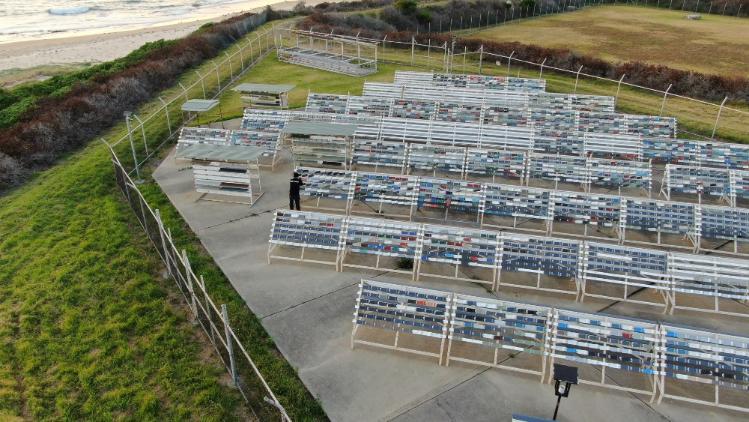May 11, 2023
Development of a sensing system for onsite corrosion monitoring
Another exciting project is underway within the Steel Research Hub, which brings together expertise from the University of Wollongong (UOW) and BlueScope (BSL) to focus on the development of a sensing system for onsite corrosion monitoring.
Project 3.1.a fits under a broader Program 3 activity - Project 3.1 Coatings: Corrosion Protection and Prediction - specifically, Theme 1: Improved corrosion assessment. In Theme 1, characterisation of the corrosion products that form on test panels after known and ostensibly similar outdoor and accelerated exposure cycles will be used to confirm corrosion mechanisms and kinetics within said exposure cycles.
BlueScope maintains a large corrosion assessment program for bare alloy and organic coated (prepainted) steel products using a combination of real-world outdoor (washed, unwashed & sheltered conditions) and laboratory-based accelerated corrosion exposure methods. The composition and morphology of corrosion products forming on coated steel samples/products are reported to be a function of the exposure environment, such that different corrosion products form on nominally identical samples/products after outdoor and accelerated exposure respectively.
The project team consists of UOW’s Chief Investigator Dr Cormac Fay from the SMART Infrastructure Facility and strengthened by BSL’S Associate Researcher’s Dr Thomas Jurak and Andrew Collins.
A proposed outcome of Project 3.1’s Theme 1 is the correlation of specific exposure conditions and history with identified corrosion products on coated steel panels in both outdoor and accelerated exposure conditions. This will permit identification of micro corrosivity trends through a deeper understanding of local environmental variables measured via appropriate sensors (e.g. local humidity, time of wetness, salt accumulation, and detritus accumulation) and how these environmental variables influence the formation of specific corrosion products on coated steel.
The expected outcome of this project is the development of an operational prototype capable of monitoring the key sensory targets in the field and in an accelerated test chamber, with energy replenished through solar cells where required. The prototype is to regularly transmit harvested sensory data wirelessly. This is expected to enable the gathering of real-world data at outdoor exposure sites and therefore provide BSL with valuable information towards the advanced development of future coating products.
The Steel Research Hub and the SMART Infrastructure Facility are very excited about the commencement of this project. We wish the project team the very best.
